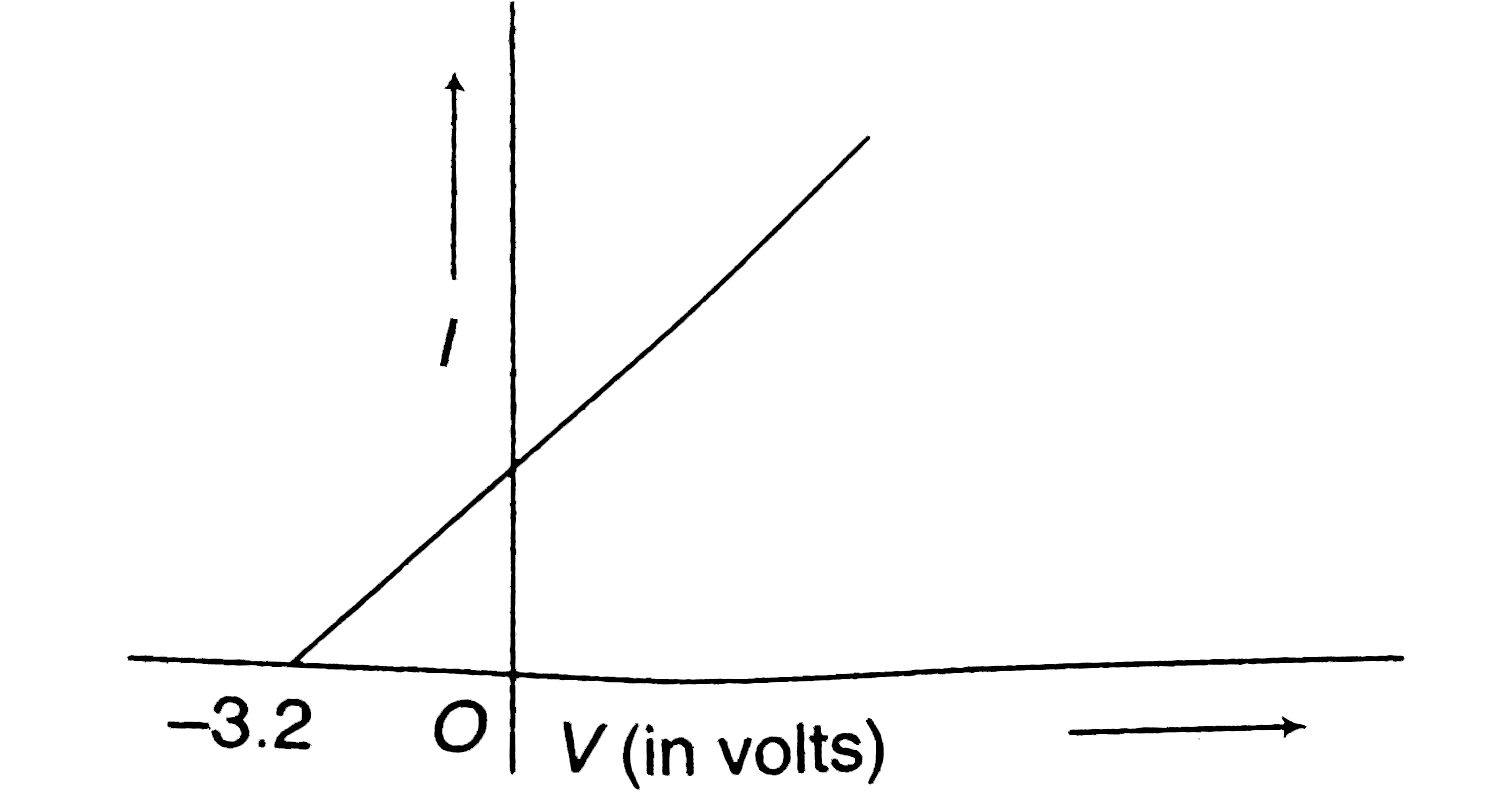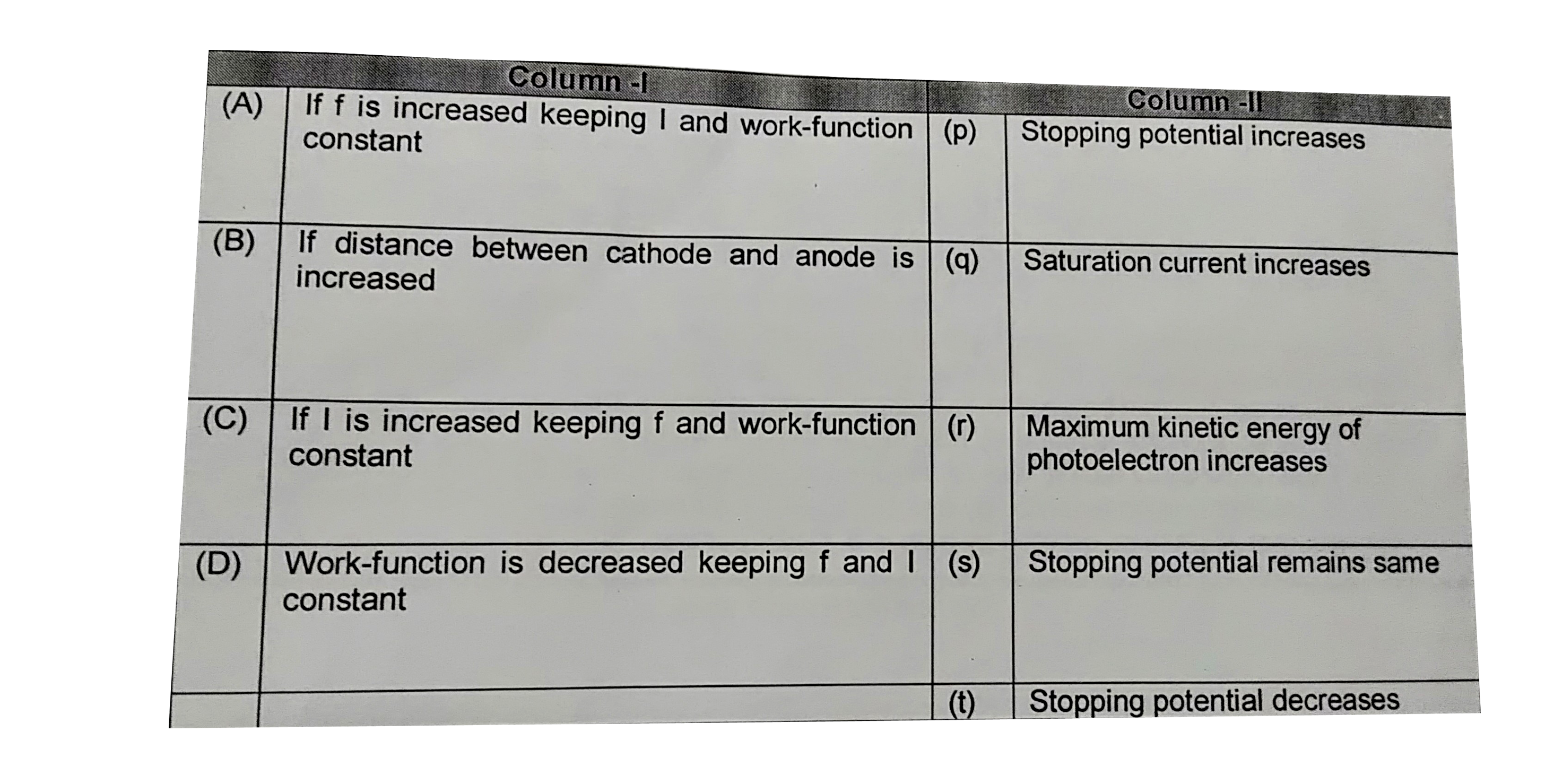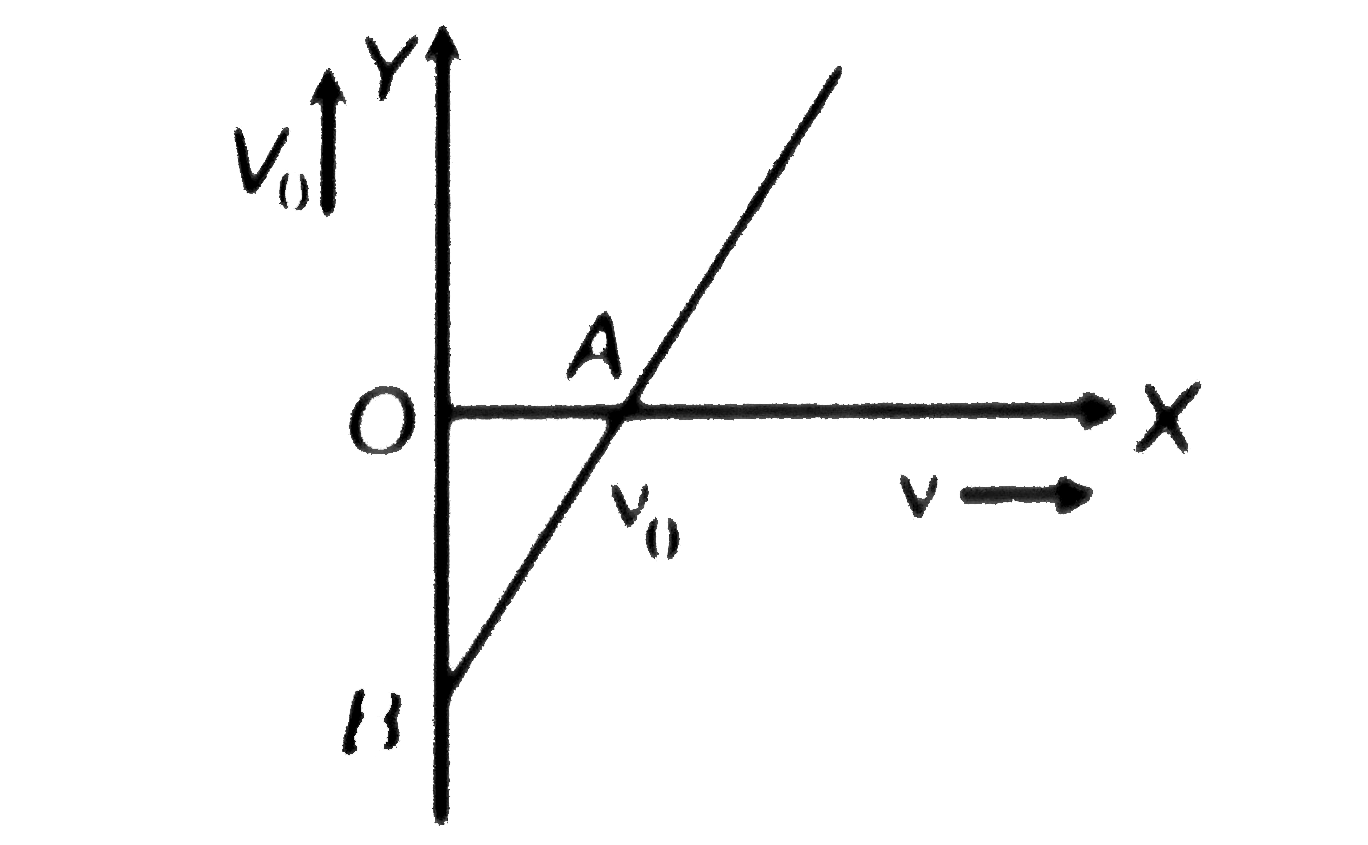In a photoelectric experiment, if both the intensity and frequency of the incident light are doubled, then the saturation photoelectric current
remains constant
is halved
is doubled
becomes four times
The correct Answer is:C
To solve the problem regarding the effect of doubling both the intensity and frequency of incident light on the saturation photoelectric current, we can follow these steps:
1. Understand the Concept of Saturation Current:
- The saturation photoelectric current is the maximum current achieved in a photoelectric experiment when all emitted photoelectrons are collected. It is also referred to as the maximum photocurrent.
2. Identify the Relationship Between Saturation Current and Intensity:
- The saturation current (I_s) is directly proportional to the intensity (I) of the incident light. This means that if the intensity of the light increases, the saturation current also increases proportionally.
- Mathematically, we can express this as:
Is∝I
3. Consider the Effect of Doubling Intensity:
- If the intensity of the incident light is doubled (I becomes 2I), then the saturation current will also double:
I′s=2Is
- Here, I′s is the new saturation current after doubling the intensity.
4. Evaluate the Effect of Doubling Frequency:
- The frequency (f) of the incident light affects the energy of the photons but does not affect the saturation current directly. The saturation current depends only on the number of photoelectrons emitted, which is related to the intensity of the light.
- Therefore, even if the frequency is doubled, it does not change the saturation current.
5. Combine the Effects:
- Since the saturation current is only affected by the intensity and not by the frequency, the new saturation current after doubling the intensity (while frequency is doubled) remains:
I′s=2Is
6. Conclusion:
- Thus, if both the intensity and frequency of the incident light are doubled, the saturation photoelectric current will double due to the doubling of intensity.
Final Answer:
The saturation photoelectric current will be doubled.
- The saturation photoelectric current is the maximum current achieved in a photoelectric experiment when all emitted photoelectrons are collected. It is also referred to as the maximum photocurrent.
- The saturation current (I_s) is directly proportional to the intensity (I) of the incident light. This means that if the intensity of the light increases, the saturation current also increases proportionally.
- Mathematically, we can express this as:
Is∝I
- If the intensity of the incident light is doubled (I becomes 2I), then the saturation current will also double:
I′s=2Is
- Here, I′s is the new saturation current after doubling the intensity.
- The frequency (f) of the incident light affects the energy of the photons but does not affect the saturation current directly. The saturation current depends only on the number of photoelectrons emitted, which is related to the intensity of the light.
- Therefore, even if the frequency is doubled, it does not change the saturation current.
- Since the saturation current is only affected by the intensity and not by the frequency, the new saturation current after doubling the intensity (while frequency is doubled) remains:
I′s=2Is
- Thus, if both the intensity and frequency of the incident light are doubled, the saturation photoelectric current will double due to the doubling of intensity.
The saturation photoelectric current will be doubled.
Topper's Solved these Questions
- BOOK - NCERT FINGERTPS ENGLISHCHAPTER - DUAL NATURE OF RADIATION AND MATTER EXERCISE - EINSTEIN S PHOTOELECTRIC EQUATION : ENERGY QUANTUM OF RADIATION23videos
DUAL NATURE OF RADIATION AND MATTER
- BOOK - NCERT FINGERTPS ENGLISHCHAPTER - DUAL NATURE OF RADIATION AND MATTER EXERCISE - PARTICLE NATURE OF LIGHT : THE PHOTON19videos
DUAL NATURE OF RADIATION AND MATTER
- BOOK - NCERT FINGERTPS ENGLISHCHAPTER - DUAL NATURE OF RADIATION AND MATTER EXERCISE - PHOTOELECTRIC EFFECT2videos
DUAL NATURE OF RADIATION AND MATTER
- BOOK - NCERT FINGERTPS ENGLISHCHAPTER - CURRENT ELECTRICITYEXERCISE - Assertion And Reason15videos
CURRENT ELECTRICITY
- BOOK - NCERT FINGERTPS ENGLISHCHAPTER - ELECTRIC CHARGES AND FIELDSEXERCISE - Assertion And Reason15videos
ELECTRIC CHARGES AND FIELDS
Similar Questions
Intensity and frequency of incident light both are doubled.
Then, what is the effect on stopping potential and saturation current.View SolutionLight of frequency 1.5 times the threshold frequency is incident on a photosensitive material, photo electric current is emitted. If the frequency of light is halved and intensity is doubled, the photoelectric current becomes
View Solutionif the intensity of light is made 4I0, then the saturation current will become
View SolutionIn photoelectric effect, what is meant by the term .threshold frequency.?
View SolutionIn a photoelectric experiment the relation between applied potential difference between cathode and anode V and the photoelectric current cathode and anode V and the photoelectric current l and was found to be shown in graph below. If planck's constant h=6.6×10−34Js, the frequency of incident radiation would be nearly (in s−1)
 View Solution
View SolutionIn a photoelectric experiment anode potential is ploted against plate current.
 View Solution
View SolutionIn a photoelectric experiment the wavelength of incident light changes from 4000 Å to 2000 Å. The change in stopping potential is
View SolutionIn the photoelectric effect experiment, if f is the frequency of radiation incident on the metal surface and I is the intensity of the intensity radiations, then match the following columns:
 View Solution
View SolutionIn a photoelectric experiment, the wavelength of the incident light is decreased from 6000A to 4000A. While the intensity of radiations remains the same,
View SolutionIn an experiment on photoelectric effect the frequency f of the incident light is plotted against the stopping potential V0. The work function of the photoelectric surface is given by ( e is the electronic charge)
 View Solution
View Solution

